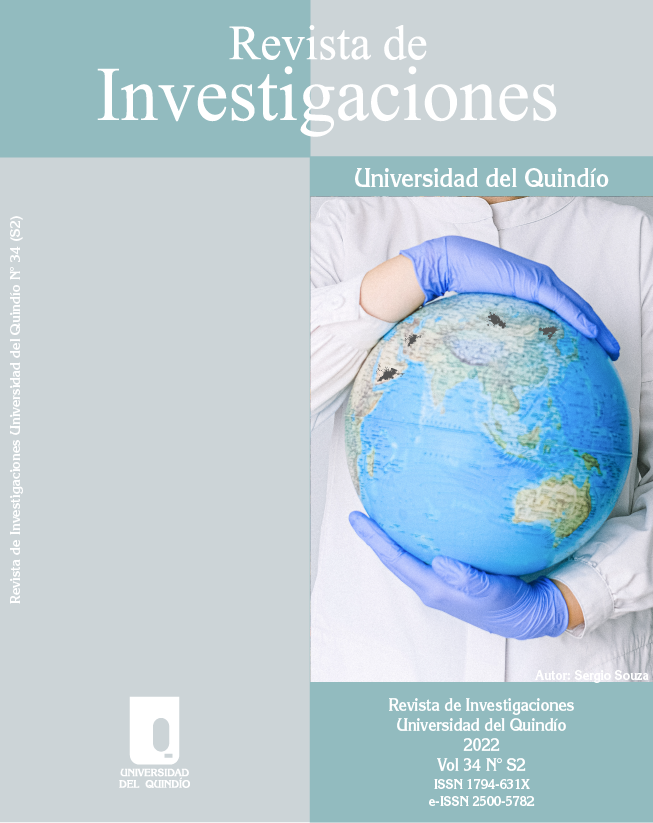El efecto de los clústeres de innovación en el crecimiento del atractivo de inversión en Rusia
DOI:
https://doi.org/10.33975/riuq.vol34nS2.944Palabras clave:
Integración económica exterior, política de clústeres, atracción de inversiones, desarrollo innovador, enfoque de clústeresResumen
La cuestión de desarrollar el enfoque más eficiente para financiar acciones de innovación en la fase actual de implementación de la política de clústeres en la federación de Rusia es muy importante. Las inversiones directas exóticas contribuyen a desencadenar el proceso de inversión en la economía global, lo que indirectamente resulta en un aumento de la sostenibilidad y la calidad. Este estudio tiene como objetivo analizar el impacto de los clústeres de innovación en la Federación Rusa a lo largo del crecimiento del atractivo de inversión y el desencadenamiento de una integración económica exótica. El análisis estructural, lógico, sistema-funcional y comparativo se utilizan para cumplir con ese objetivo. Dados los resultados, los métodos de inversión regionales sobre la base de los medios de clúster afectan en gran medida las atracciones de inversión de los grandes inversores. Sin embargo, las inversiones en grandes empresas individuales no son tan positivas como se esperaba. Parece completamente racional pensar que los resultados de la escasez actual de financiación de la innovación son desiguales. 2020 fue bastante desafiante para los negocios en todo el mundo. Las empresas innovadoras no fueron una excepción, aunque la implementación y el desarrollo de nuevas herramientas no terminaron y terminaron quiche en algunos ámbitos. La investigación de la literatura especial sobre el tema bajo observación nos permite concluir que es absolutamente vital evaluar los problemas de la política de clústeres rusa y el atractivo de inversión de los clústeres innovadores.
Descargas
Citas
Adamenko, A. A. (2017). Competition in meso-level cluster formations developed with the participation of small and medium-sized enterprises. Economics. lAW. Printing. KSEI Bulletin. 73-74 (1-2), 128-132.
Babkin, A.V., & Novikov, A. O. (2016). Cluster as the economy subject: essence, current state, development Scientific and technical statements of the St. Petersburg State Polytechnic University. Economics. 1 (235), 9-29.
Babkin, A.V., & Tashenova, L. V. (2017). A backbone innovative-active industrial cluster in the context of digital transformation: concept, essence, features. Proceedings of the correspondence conference Economics and Management in Digitalization (December 7, 2017) / St. Petersburg Polytechnic University Publishing House, 301-313. DOI: 10.18720/IEP/2017.7/35.
Babkin, A., Tashenova, L., Mamrayeva, D., & Azimov, P. (2019, October). Development of algorithm to measure digital potential of high-tech industrial cluster. In Proceedings of the 2019 International SPBPU Scientific Conference on Innovations in Digital Economy (pp. 1-7).
Govdya, V. V. (2015). State policy of the cluster form of organizing the interaction of agrarian formations. Political network electronic scientific journal of the Kuban State Agrarian University, (112), 1353-1369.
Govdya, V. V., Khromova, I. N., Vasilieva, N. K., Sigidov, Y. I., & Polutina, T. N. (2017). Decomposition approach to formation of accounting and analytical system of cost management in agricultural enterprises. Journal of experimental biology and agricultural sciences, 5(6), 818-830.
Kashukoev, M. V., Tyupakov, K. E., MARIEVA, M. A., MUSAYEVA, B. M., & Misakov, A. V. (2020). Features of model building for an inter-sectoral agro-industrial cluster as a quasi-integrated structure. AD ALTA: Journal of Interdisciplinary Research, 10(2 S12), 126-128.
Kesyan, S. V. Cluster approach to the organization of integration interaction of agro-industrial complex subjects of the meso-level. Bulletin of the Adyghe State University. Series, 5, 225-232.
Korsak, M. M., & Surdo, A. P. (2018). Formation of a conceptual model of the organizational and economic mechanism of management. Economic Bulletin of the University. 37 (1), 90-96. DOI: 10.5281/zenodo.1220880
Khachaturyan, M. V. (2016). Specificity of the study of the organizational and economic mechanism of industrial policy management in a modern market economy // Bulletin of the RUE named after G.V. Plekhanov. 1 (85), 81-87.
Kungurtseva, V. S., & Titov, A. B. (2018). Trends and problems of innovative development of information and communication systems in the digital economy. Scientific and technical bulletin of SPbSPU. Economics. 11, 54-63. DOI: 10.18721/JE.11105
Kuznetsova, O. V. (2022). Creative Industries Development in Russia: A Way to Transform the Urban Environment. In Proceedings of the International Conference Engineering Innovations and Sustainable Development (pp. 545-553). Springer, Cham.
Makarenko, S. A., Sukhina, N. Y., Krymov, S. M., Martynenko, S. V., & Adamenko, A. A. (2018). Testing economic systems of capitalist countries by the world economic crisis. Espacios, 39(31), 37-52.
Mindlin, Y. B., Novikov, S. V., Kireev, S. V., Adamenko, A. A., & Belitskaya, O. V. (2016). Innovative territorial clusters. International Journal of Economics and Financial Issues, 6(8), 251-256.
Morozova, I. A., Kuzmina, E., Volkov, S. K., & Shevchenko, S. A. (2022). Innovative Cluster as a Structuring Element of Sustainable Spatial Development in the Region. In Сooperation and Sustainable Development (pp. 1579-1587). Springer, Cham.
Napolskikh, D. (2021, March). Transformation of the Volga region's economic space based on the development of innovation clusters in the conditions of digital economy. In IV International Scientific and Practical Conference (pp. 1-4).
Piterskaya, L. Y., Zinisha, O. S., Avdeeva, R. A., & Goncharova, N. A. (2019). Development of a model to increase the investment attractiveness of an enterprise. International Journal of Innovative Technology and Exploring Engineering, 9(1), 3961-3964.
Prokhorova, V. V., Adamenko, A. A., Tupchienko, V. A., Shalatov, V. V., Vasnev, S. A., & Blaginin, V. A. (2017). Clustering of modern economic processes:" Pros" and" Cons". International Journal of Applied Business and Economic Research, 15(12), 225-232.
Shutov, P. P. (2014). Innovation cluster: problems and development prospects. Bulletin of the Samara State University. 4 (115), 79-83.
Zdolnikova, S. V. (2016). Organizational and economic mechanism for managing the innovative potential of integrated industrial structures. Scientific and technical statements of SPbSPU. Economics. 4 (256), 109-122.
Descargas
Publicado
Cómo citar
Número
Sección
Licencia
Derechos de autor 2022 Revista de Investigaciones Universidad del Quindío

Esta obra está bajo una licencia internacional Creative Commons Atribución-NoComercial-SinDerivadas 4.0.


